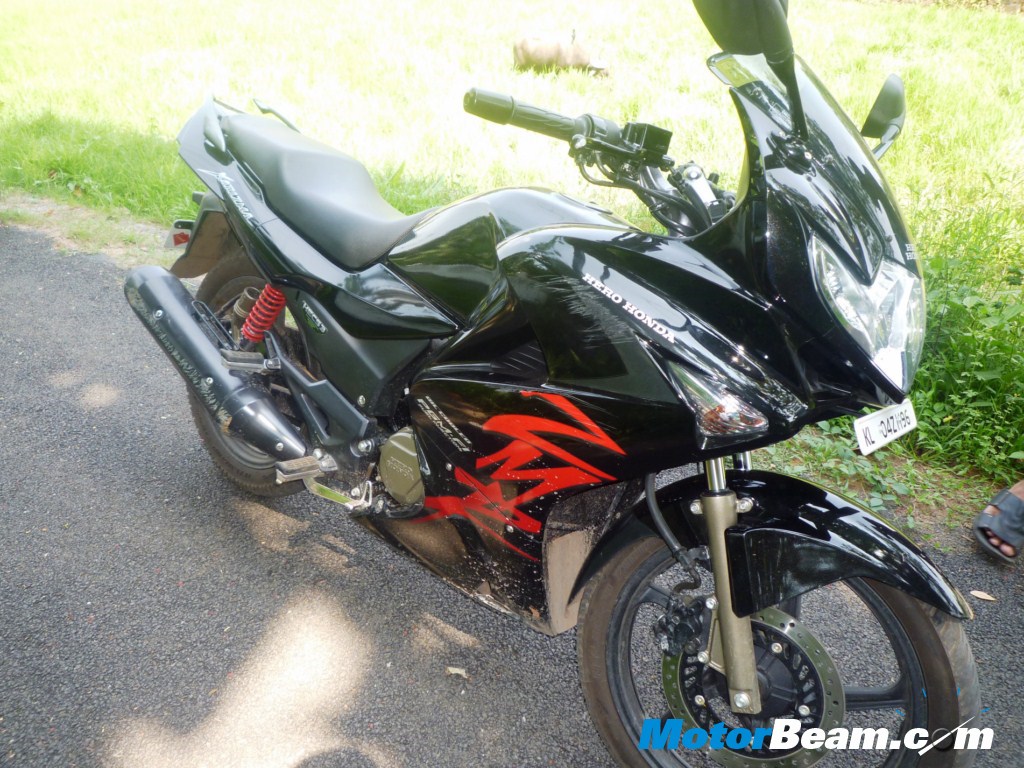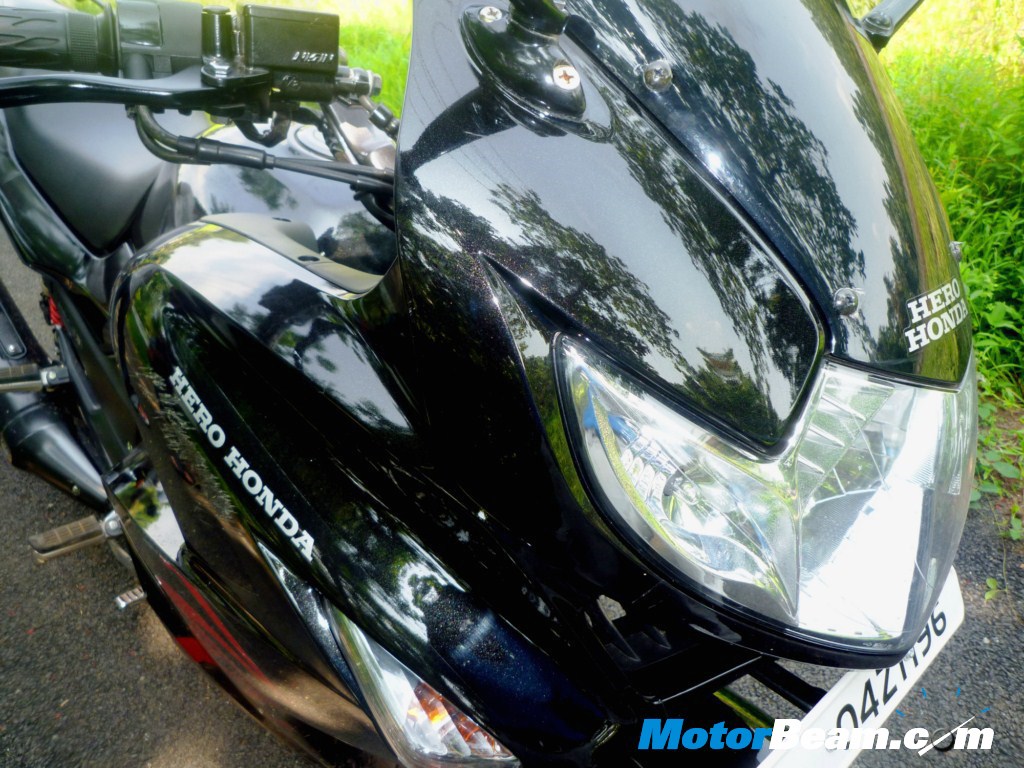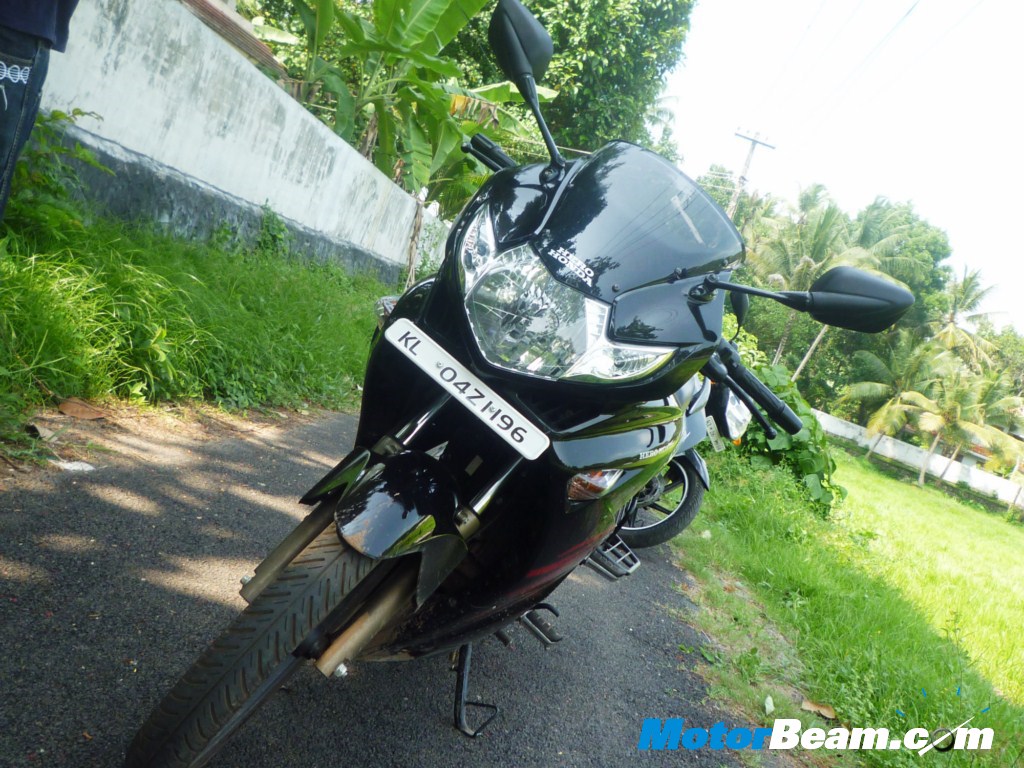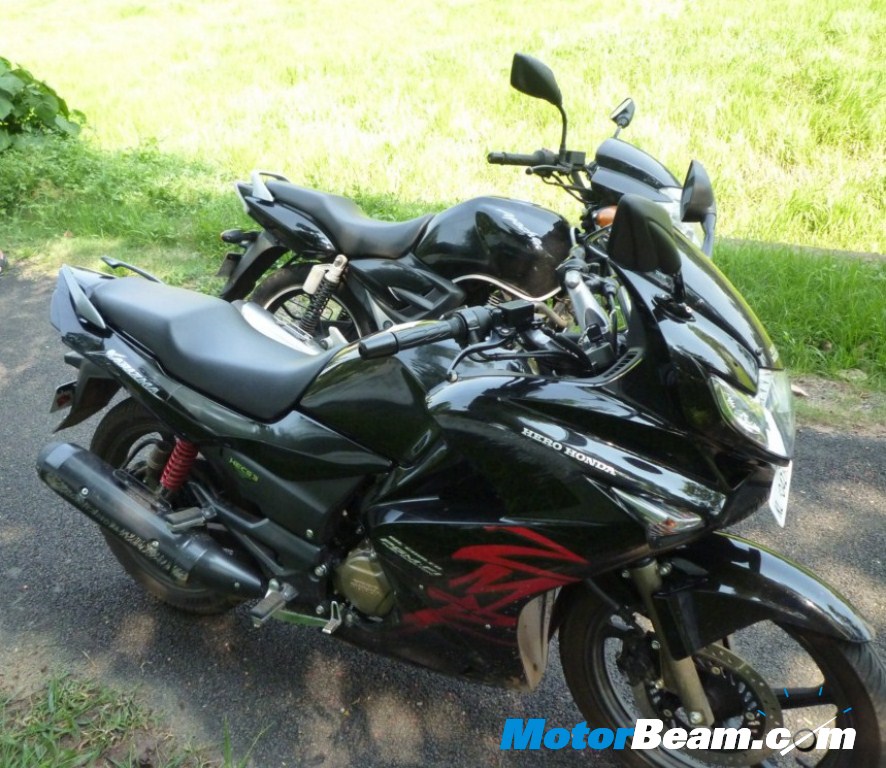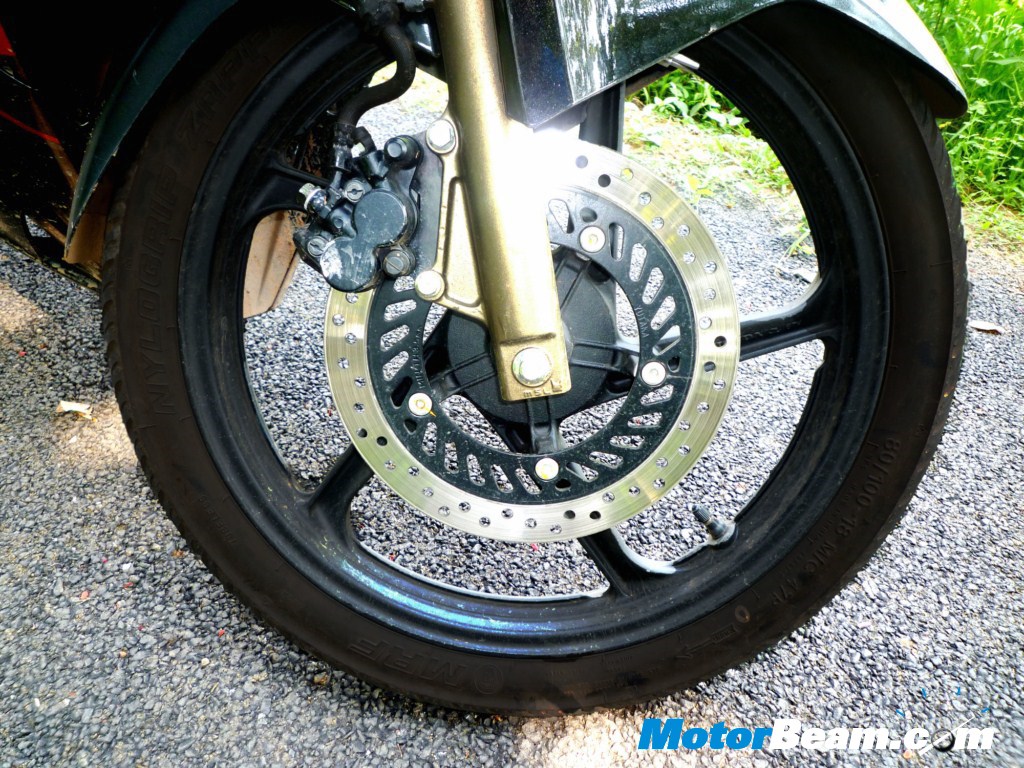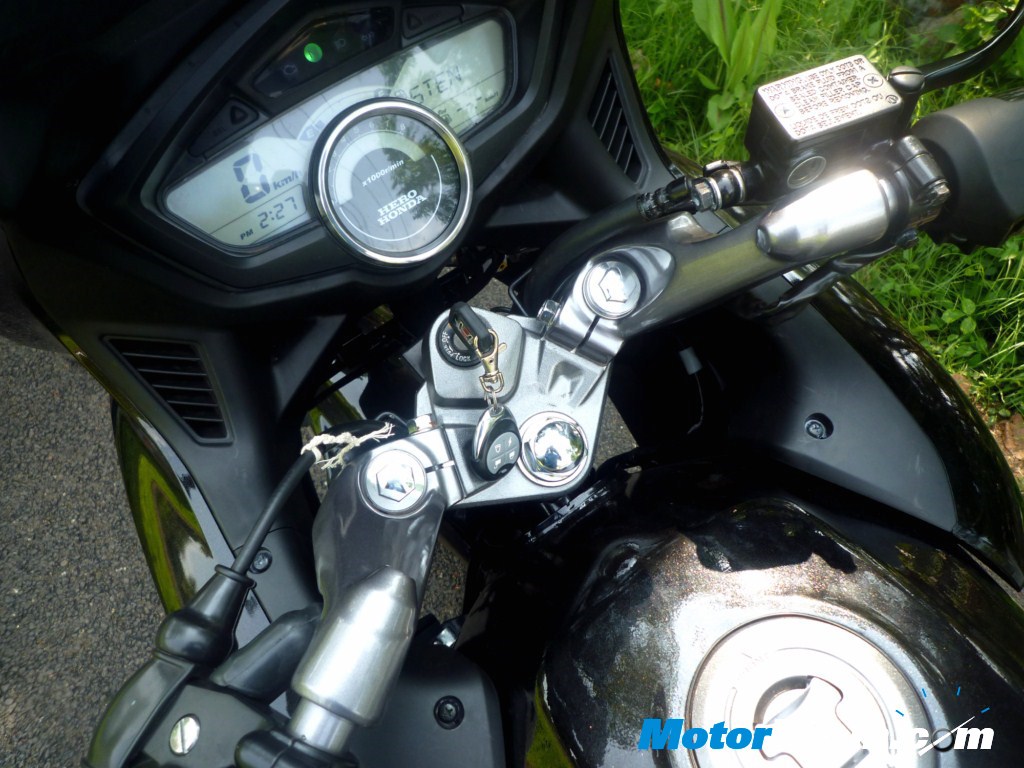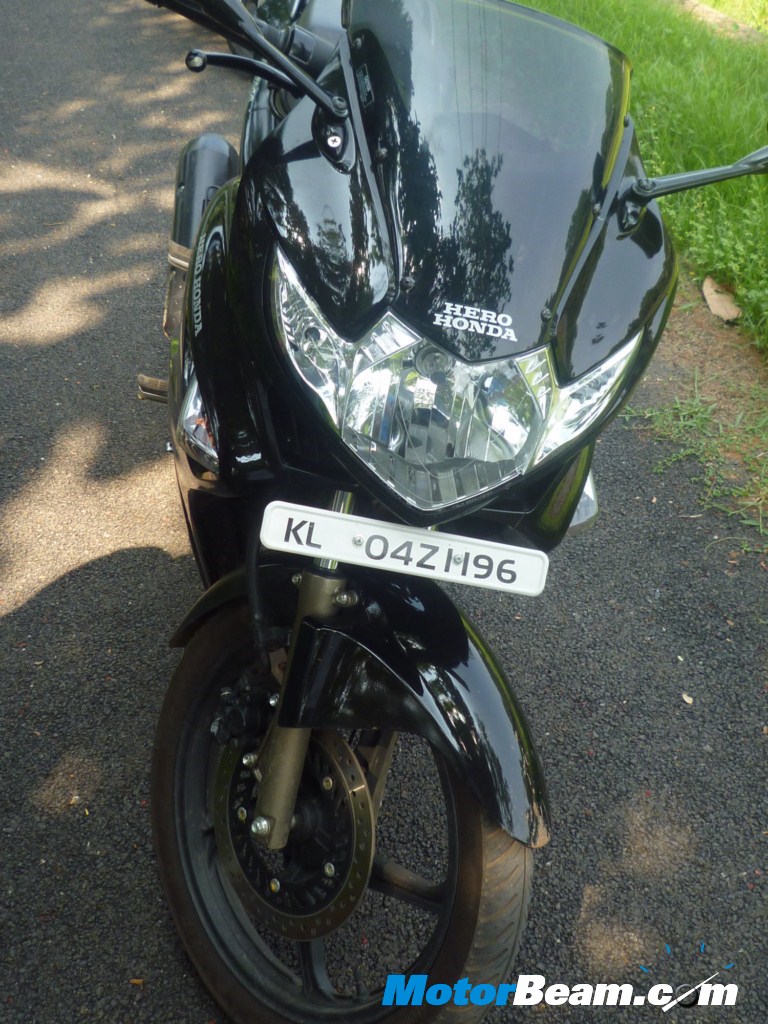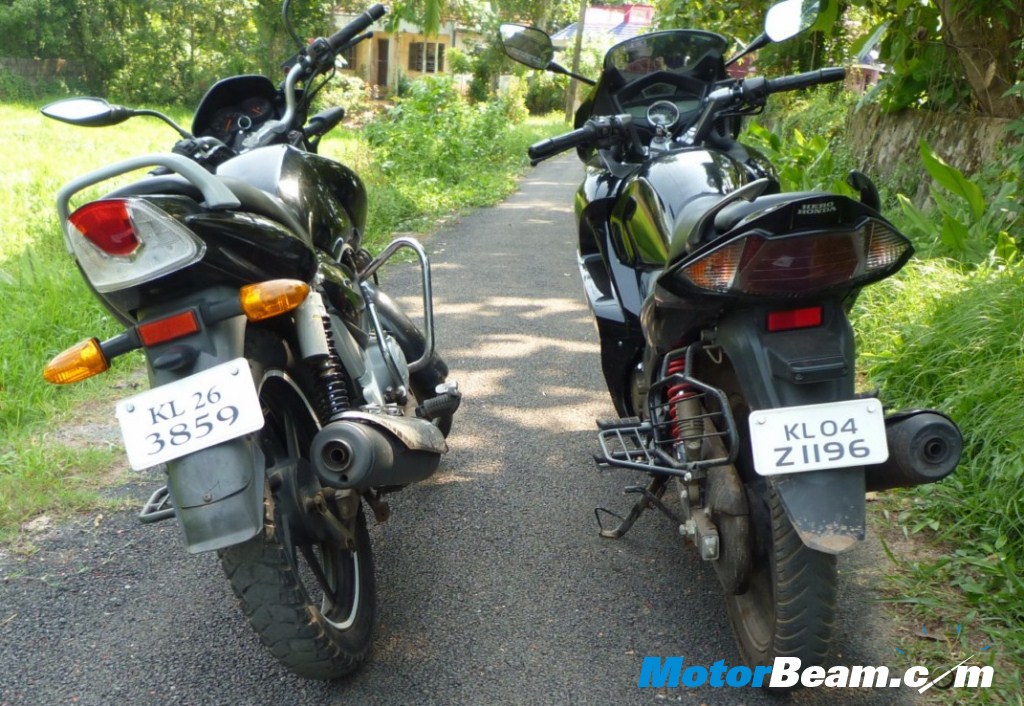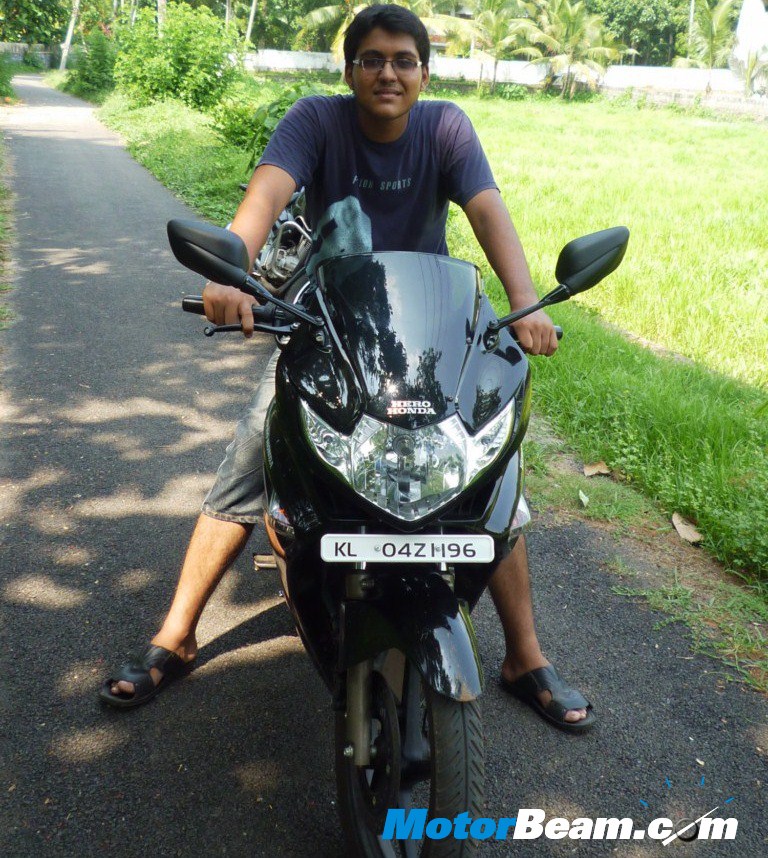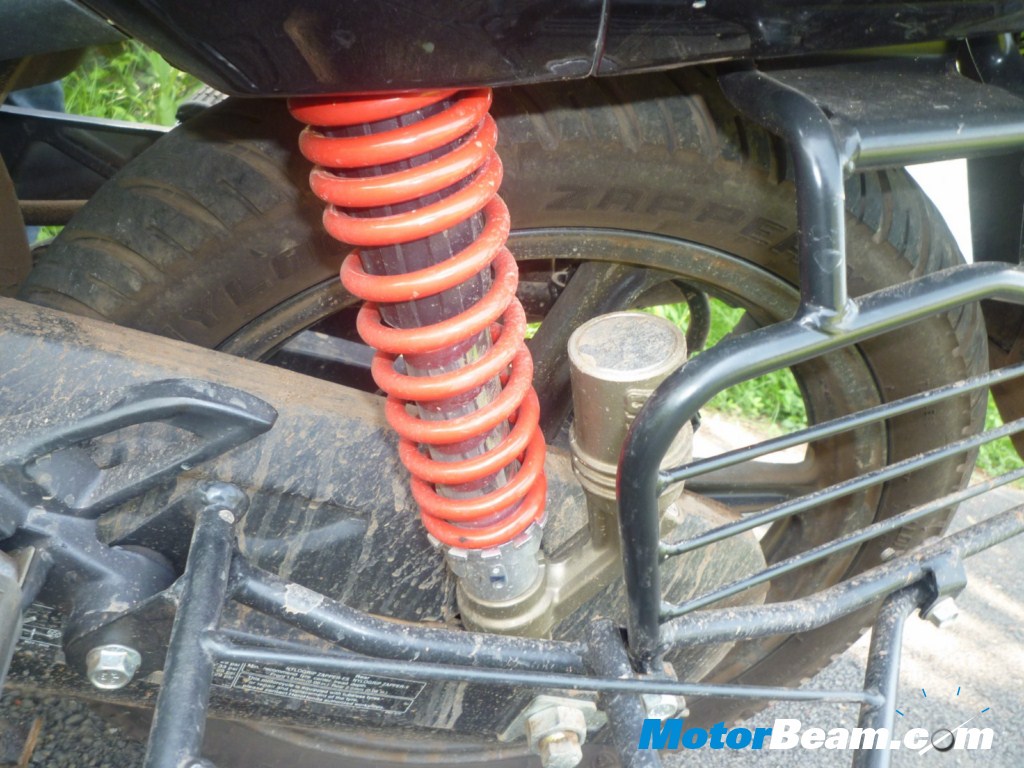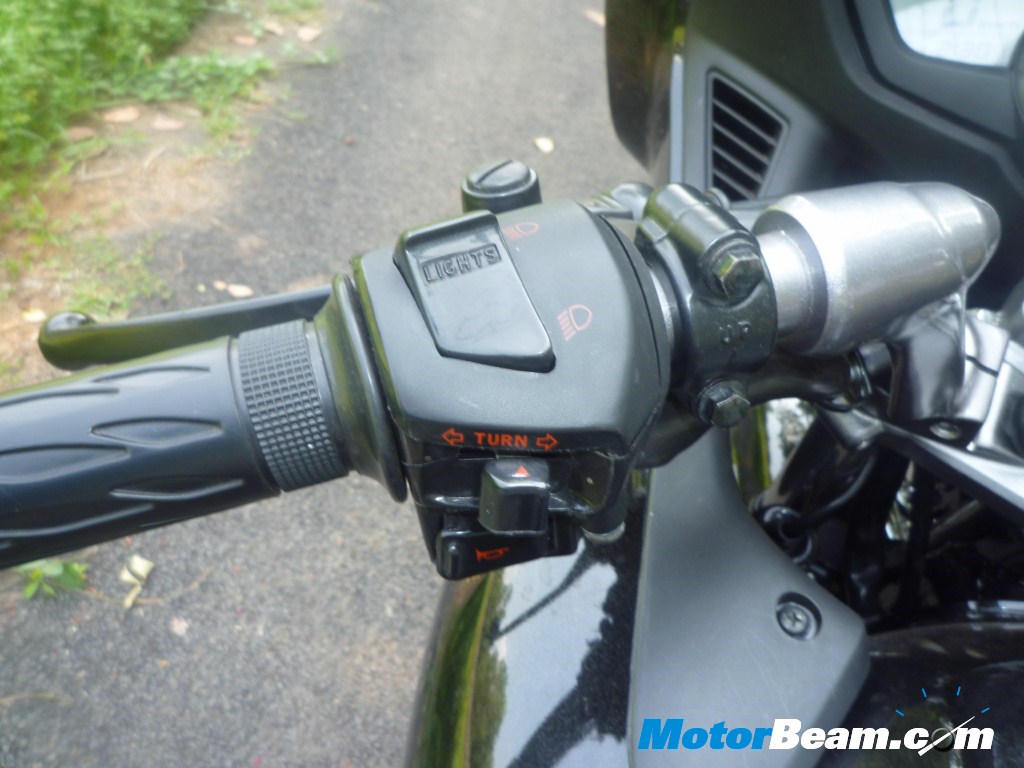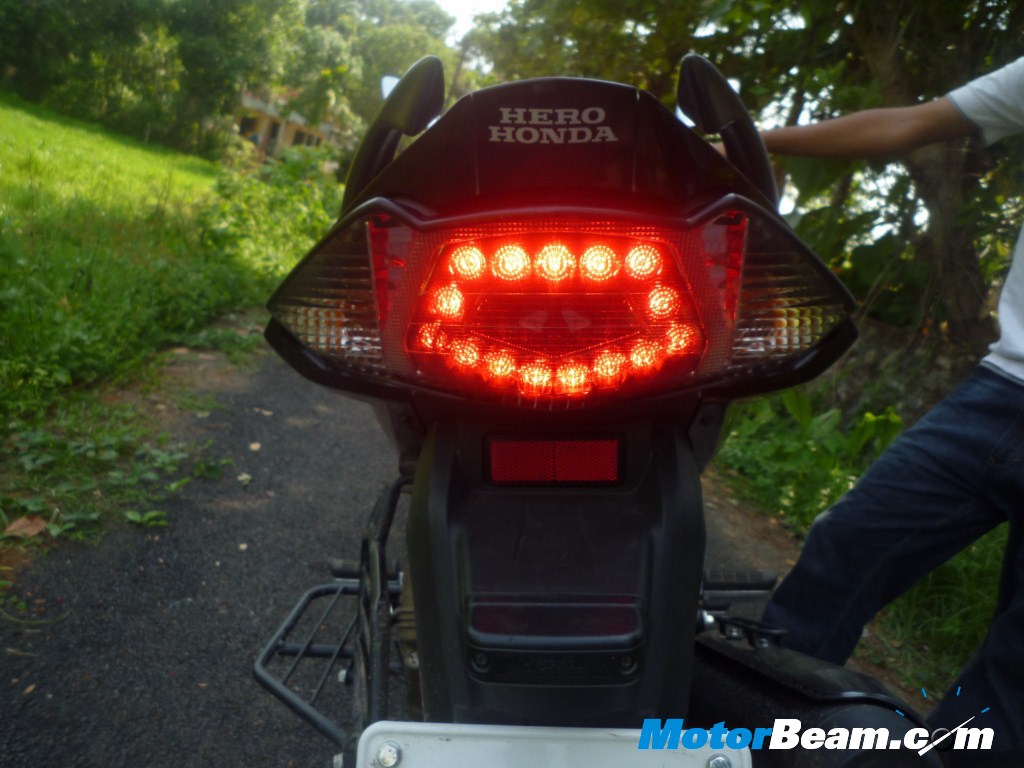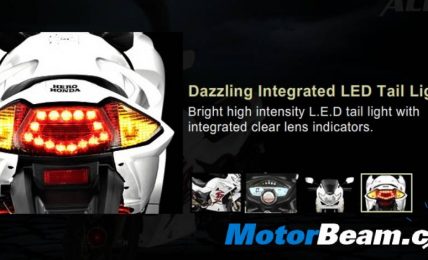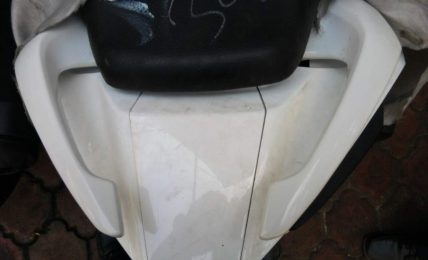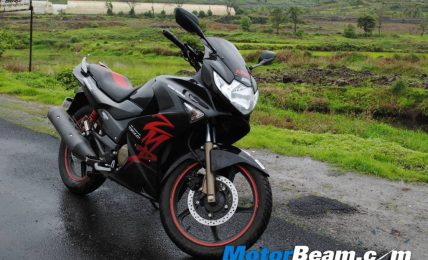Bike Tested: 2010 Hero Honda Karizma ZMR
Price OTR Mumbai: 1,05,569/-
With the launch of the original Karizma back in 2003, Hero Honda, in those days, had established itself as the maker of the best, the fastest and the most powerful bike in the country. It had an almost legendary status that is the same to this day, stunters, tourers, posers, racers, all loved this bike beyond bounds. A close look at the Hero Honda Karizma ZMR reveals that a lot of ingredients have contributed to this hugely popular mix of power, style and efficiency. The amazingly reliable engine from Honda, upright, comfortable seating position and power enough to do an all India tour with the utmost ease. With such acclaimed credentials to its name, making it better was in no way, an easy job.
In theory, creating a sequel was simple; make it bigger and better while retaining its essence. This wasn’t Hero Honda’s first attempt at a creating a successor to an established and reputed bike, the old CBZ was re-invented and bought into the market as the Xtreme, sadly though, they never quite managed to re-create the magic; when the time came for Hero Honda to take up the task of re-inventing the hugely popular and much loved Karizma, rumors spread around like wild fires, 250cc with liquid cooling, mono suspension and the usual outrageous predictions, but, it wasn’t too much to ask for, since the old Karizma had set the bar for performance bikes in its time and even after so many years, its performance hasn’t ceased to impress, with the competition scaling new heights, nothing made Hero Honda fans happier than the thought of a new Karizma that could topple the bike that had taken its crown as the performance king – the Pulsar 220.
Those were the pre-launch expectations, when the bike was finally launched, the spec sheet seemed frankly disappointing, a minor 0.7 bhp increase in power over the old machine despite an addition of 10kg of body mass, also with the addition of fuel injection, the final price crossed the Rs. 1 lakh mark, it wasn’t all frowns though, the bike seemed better with the full fairing. The cool new all – digital instrument console, rear disc brakes, fuel injection and oil cooling did at least make it seem like a better option than the other bikes in the market. Inch for an inch, we take a really close look at the machine, and ask ourselves if Hero Honda have done justice to the Karizma brand.
Styling – The first impression we had of the bike, through the photos were that it was un-inspiring, same quite goes to what it’s like in person, it’s just big, not very handsome to say the least, the headlight looks like a blown up version of the Suzuki GS150R’s. From the rear too, the bike seems disproportionate, a big wide tail light with indicators hovering over a comparatively puny bottom, not what we would like especially considering the price. The front fairing also seems to have received inspiration from another Suzuki bike, the Hayabusa, the ZMR logo has a striking resemblance to the logo on the same. The Panther black paint job on the bike looked good from a distance, but upon close inspection we could find flakes on the surface which was good until we noticed the ripples on the painted surfaces, not a glass like finish as expected. In terms of looks, it is definitely bigger, the Karizma ZMR looks good from certain angles especially from the front sides.
The most attractive part though, is the cool new instrument console, it looks great and the whole front fairing, from a riders point of view, is designed around this very object. Numbers are large and clear and does a good job of representing what’s important. The speedo and the odometer glow in amber, while the tacho glows in a light blue shade, it really looks great in the dark. Another cool feature that the bike features is the welcome message, when the key is turned to the ‘On’ position, the following message is displayed ‘Hi, welcome aboard the Karizma ZMR, fasten your helmet and fly safe, Bon Voyage’ an 8 – digit name can also be stored by turning on the ignition while holding the ‘Reset’ button. This name would appear just after the ‘Hi’, Even when turning off, it displays ‘Bye <name>, C U Soon’, we think it’s a nice touch of customization. There’s also the Real Time Mileage Indicator (RTMI) that was first seen on the Glamour Fi, what it does is, based on the last 10 seconds of RPM, throttle, speed and fuel used, the screen displays the approximate achievable mileage. During our tests it usually hovered around 30 – 40 with occasional spikes taking it to 100 and down to 15. This can be a good tool for the conservative tourer. The LED tail lights are also very bright, housing a total of 15 LED’s.
Feature wise, in comparison to the older Karizma, the addition of rear disc brakes and oil cooling will help serve the touring needs better. But the full fairing, while making the bike heavier, simply adds to the effort of cleaning up the insides especially after a long drive through muddy roads, more-over, the lack of a crash guard and the almost unified structure of the fairing means that, in case of it getting damaged, the only option would be to replace the entire thing which is not exactly wallet friendly. Hero Honda should have taken a look at the design of the Yamaha Fazer and R15, both of which have replaceable and inexpensive crash panels on the sides. The addition of fuel injection is also welcome since it eliminates the need to retune the carburetor during high altitude adventures, something that can save a lot of headache.
Overall, the features are quite good, if it wasn’t for the slightly thoughtless design of the faring, we would have highly appreciated it, also the fact that Hero Honda have retained the time display in the instrument console shows that they had the old Karizma in mind while on the drawing board.
Performance – The engine has been one of the favorites of a Karizma owner, the way the power is delivered all the way from the bottom to the top of the rev counter and its eagerness, all have been highly praised in the old Karizma, with the new fuel injected version, Hero Honda have turned up the level of refinement. The engine has its origins in the CRF230 motocross bikes but comes in a more detuned fashion for Indian riding conditions, also the unit has proved its worthiness on the track and on the roads so far by being outstandingly reliable and cheap to maintain. One of the key features is that it is an undersquare engine, meaning that instead of producing maximum power, the torque is made to spread across the entire rev range, effectively making it hassle free to ride around at low speeds.
On the ZMR, the engine has been improved even further, mainly by the addition of fuel injection and oil cooling, with these new additions, Hero Honda have addressed the concerns of the really adventurous and long distance traveler. During high altitude climbs, the old carbureted engine had to be adjusted for the right air-fuel ratio in order to avoid the risk of stalling the engine. The FI system uses several sensors all over the engine to gauge the oxygen level, engine temperature, throttle position, air flow and fuel flow among others, these sensors feed data to the ECU ( Engine Control Unit ) which then sets the appropriate air-fuel ratio. This ensures that the performance and fuel efficiency stays constant under all kinds of riding conditions, the addition of the oil cooler further re-enforces the Karizma as India’s best sports touring bike as it helps keep the bike cool under really harsh, high speed, long distance riding.
As soon as its fired up, the engine settles with almost the same engine note its younger brother, it revs very easily up to the red line. Slot it into first, get moving, twist the throttle at just 2,000 Rpm and you could feel the under-square engine doing its magic, the torque just kicks in from as low as 1,500 Rpm, pushing you back, rev harder and you could feel the wave of power coming your way as the front wheel just looks for a reason to point at the sky. Acceleration at low speeds was so good that after repeated tests, my wrists felt like they were going to get detached from my arms. On the roads at steady speeds of 70 km/h, the ZMR feels just as ready as it was while standing still, twist the throttle and it just shows no signs of hesitation, twist the throttle all the way in 5th gear and it would climb upto 110 without as much as the slightest hesitation and from there on a little crouching down would let you witness 124 kmph after which the bike shows signs of giving up.
The important thing is not how fast it goes, but how it gets there, shifting down is merely an option if you would like to make some noise while going faster, otherwise, in any gear, as long as the meter shows 2,000 rpm, the ZMR is ready for the kill at even the slightest twist of the throttle. It just demonstrates how good the engine really is, yes it’s not the fastest bike around, but who cares, it is really relaxing to drive more so because, as an example, if you were to find a slow moving truck in front, just twist the throttle, move over to the opposite lane, no worries at all and a few seconds later, voila, the truck appears in the rear view mirror, turning into a dot within a few seconds, at cruising speeds, the wind becomes louder than the engine which really overshadows the real fact that it is like a tiger waiting to be unleashed.
In terms of power, we believe that the old bike was faster, mainly due to the 10 kilos of additional weight that this bike has come with, refinement though is much better now, under hard riding, cold and hot weather, the throttle felt consistent unlike the minor fluctuations in power and feel the old bike had especially in cold weather.
Ride, Handling and Braking – This is another area where the Karizma’s have managed to stand out and carve a niche for their own, these bikes are essentially sports tourers, bikes that have been designed for long journeys. Even with the addition of the split handlebars, the seating position of the ZMR remains upright as ever, the really wide and low seats surprisingly managed to hide the mass of the machine as soon as it was sat on. It’s comfortable, the new front fairing does help in deflecting the wind to a certain level. Despite the focus on touring, the ZMR manages to be equally sporty around the twisties, the slightly rear set foot pegs, the peg feeler all work together to give this bike some great lean angles. Though it’s not as nimble as, say an RTR, it feels planted and secure. It is definitely wider than before which means zipping through traffic isn’t exactly as easy as it used to be.
The new tubeless tyres go a long way in providing safe and better stopping power, doing justice to the Nissin 276mm front and 240mm rear discs. In effect, at 80, Km/h, at full braking force, the twin discs work like anchors thrown from a ship, a huge ship to be precise. The front end dives in and feels really firm while the rear stays on the ground without skidding at all. Applying the front brakes alone shows how the tubeless tires have improved the entire feel of braking over the older generation. Under hard braking, tubeless tires form a slightly flat surface where the tyre touches the road, this increases the contact area just when its needed, thereby providing more traction. The old tires remained stiff under hard braking causing skids quite easily. We also felt an improvement in tyre tread quality especially when braking on muddy roads where it required a little more effort on the brake levers, than its predecessor, to lose grip.
The suspension was also tuned on the ZMR, most notably at the rear where an inverted gas charged unit sits in place. Inverting the shock absorbers help reduce un-sprung weight thereby increasing damping, we believe this was done to make up for the added weight of the disc brakes on the rear wheel. The ride comfort also depends on the pre-load the shock absorber is set at, going from soft to hard, at the factory – medium setting, the ride was slightly bumpy at the rear when ridden alone, the front forks kept the bike stable and steady across a variety of roads, but it was the rear shocks that needed some tweaking to get the best out of it. Set it at the softest setting and you instantly realize that this bike can actually glide, the ride changes from that of a tractor to a sail boat, across most roads. Overall, the ride, handling, seats and riding position feels good enough for really long journeys across a variety of terrain, we couldn’t find a reason to complain about.
Ownership Experiences and Problems –
We never expected to hear a niggles about this bike from Lejo Joseph, the owner, but we listened, after all no one knows the imperfections of a bike better than its owner, to begin with the bike has already covered around 1,200 KM and the first service was just completed at the time of our testing. Here are his findings:
The right side rear-view mirror fell off one day while riding, apparently, the screws had come loose due to fairing vibrations. The folks at the service center fixed it by using a bigger, different scew.
The engine jerks during shifts between 2nd and 3rd gear, this was identified to be a problem with the engine mounts, which we think, could be a one-off case.
Mileage, on an average hovers around 35 kmpl and is said to go up to 40 by the time the 3rd service is done.
The bike is also heavy and the rider may tip the bike over if he leans beyond a certain angle while standing still. The scratches on the silencer and fairing are the results of an attempted wheelie, it was this crash that revealed to him that the whole front fairing had to be replaced in case of fairing damage.
Conclusion – The bike is no doubt an awesome package, it is clearly not the fastest and Hero Honda had no intention of making it so, the bike shows what all sorts of people really wanted from a Karizma, big bad looks, and most of all, better features. The ZMR hasn’t broken any moulds like its younger brother, but it speaks volumes about what Hero Honda are capable of delivering and how they can improve an already outstanding product. They have surprisingly kept the Karizma DNA intact while making all the changes, Comparing it to the other bike in the segment, the Pulsar 220, the ZMR stands above in terms of features, handling, looks, class, reliability, refinement, brand name and technology, more than enough for it to take the crown from us as the best 220cc bike in the country today.
What’s Cool
- Quality
- Touring ability
- Reliability
What’s Not So Cool
- Costly spare parts
- Only 17.6 bhp
- Price
Hero Honda Karizma ZMR Fi Specifications –
- Displacement: 223cc
- Engine: 4 Stroke, PGM-Fi
- Maximum Power: 17.6 Bhp @ 7000 rpm
- Maximum Torque: 18.35 Nm @ 6500 rpm
- Gears: 5 Speed
- Clutch: Multiplate Wet
- Bore: 65.5
- Stroke: 66.2
- Cylinder Configuration: NA
- Engine Block Material: NA
- Chassis Type: Tubular Single Cradle, Diamond Type
- Cooling Type: Air Cooling
- Suspension(Front): Telescopic Hydraulic Shock Absorbers
- Suspension(Rear): Swing Arm with 5 Step Adjustable Type Hydraulic Shock Absorbers
- Brakes and Wheels
- Wheel Type: Die Alloys
- Wheel Size: 2.75×18 – 100/90 mm
- Brakes: Front and rear Discs
- Stand Alarm: False
- Other Specs
- Headlamp: 35W/35W – Halogen
- Ground Clearance: 150.00 mm
- Fuel Tank: 16.00 ltrs; reserve: 2 litres
- Electrical System: 12V – 7 Ah – 188 W Alternator
Hero Honda Karizma ZMR Fi Dimensions –
- Length: 2125 mm
- Width: 755 mm
- Height: 1160 mm
- Wheelbase: 1355 mm
- Ground Clearance: 150 mm
- Kerb Weight: 159 kgs


